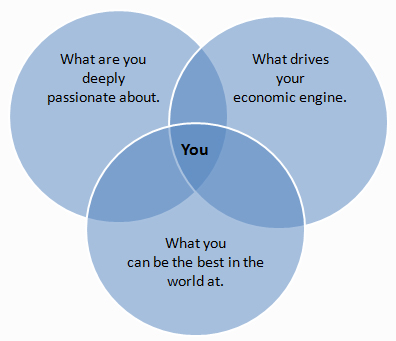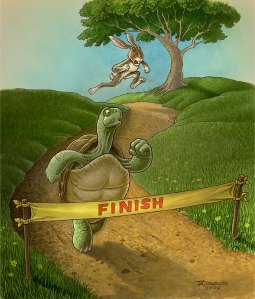Good to Great #4: The Hedgehog Concept
In the book Good to Great, Jim Collins discovers that great companies from his study all had a similar approach to their business, an approach that lead them to greatness. Collins calls this approach the Hedgehog concept. The idea is that hedgehogs are focused and diligent in their activities, unlike foxes that chase shiny objects and are easily distracted. While I believe there is a better comparison than a hedgehog and a fox, it’s what Collins used to describe the success of these businesses.
The hedgehog concept boils down to this: in order to be successful, organizations must focus their resources, energy, and time on one thing, one activity or product, and do it extremely well. You can’t be scatter brained and try to have your hand in multiple “pies” or fields of work. Those groups that aren’t just good, but great, focus on doing one thing well and do it better than anyone else.
To decide what your “one thing” is, Collins offers the following imagery. Your hedgehog concept is found at the intersection of these three circles.

What are you passionate about? What do you want to do more than anything else and likely have been doing for a while? This is probably the easiest question for most people to answer. However, something your passionate about doesn’t usually intersect with the other two circles. So you have to think about what you are most passionate about that intersects with the other two circles.
What can you be the best at? Collins emphasizes the need to ask yourself this question with no bravado. What can you really be the best at? There can be no exaggerating or false modesty when answering this question. You can’t just be competent at this; you must strive to be the best in your field. And you don’t need to be the best right now. What can you prepare to be the best at? Whatever you decide, what skills do you have that set you apart from the rest of the market?
What drives your economic engine or what can you make money at? The first way to look at this circle is to ask, what will people pay for? If that doesn’t apply to your field, I believe the question can be seething like, what can you persuade people to participate in or what can you motivate the highest number of people to buy into? There are a lot of ways to look at this circle especially in a social networking world where “views” or “likes” are equivalent to money.
The Tortoise and the Hare
I think this story is a better description of what brings organizations from good to great than a hedgehog. In Dave Ramsey’s book “Entreleadership” he talks about an opportunity he had once to sit down with someone he looked up to in business. This person said there was one book Dave needed to read. Dave, with pen and paper in hand eagerly waited to hear the title. The man said the most important book Dave needed to read was The Tortoise and the Hare! The man laughed about how it always ended the same, with the tortoise winning, no matter how fast the hare ran.
 The key point here is that speed or any other skills without diligent focus means nothing. Discipline and diligence is of far more worth than being the fastest or flashiest. But more than that, what Collins is trying to explain in Good to Great is that diligence and discipline is fundamental to great organizations; diligence in their production, diligence in their work ethics, diligent in all aspects of their organization.
The key point here is that speed or any other skills without diligent focus means nothing. Discipline and diligence is of far more worth than being the fastest or flashiest. But more than that, what Collins is trying to explain in Good to Great is that diligence and discipline is fundamental to great organizations; diligence in their production, diligence in their work ethics, diligent in all aspects of their organization.
The Tortoise and the Hare also highlights the fact that conditions of ones environment do not dictate success – the environment does not determine greatness. Greatness is not the result of circumstance. Greatness is the result of conscious choice and discipline.
But more than that, the hedgehog concept scopes and focuses an organizations mission, which provides a map to success. Collins explained some organizations took years to figure out what their hedgehog concept was, others it took less. No matter how long it takes, it is essential that a person or an organizations know what their hedgehog concept is and then to execute with diligence and discipline to ensure success. Otherwise, you find yourself bouncing from one idea to another with no discipline, which is a perfect segue to the next principle Collins touches on: A Culture of Discipline.
